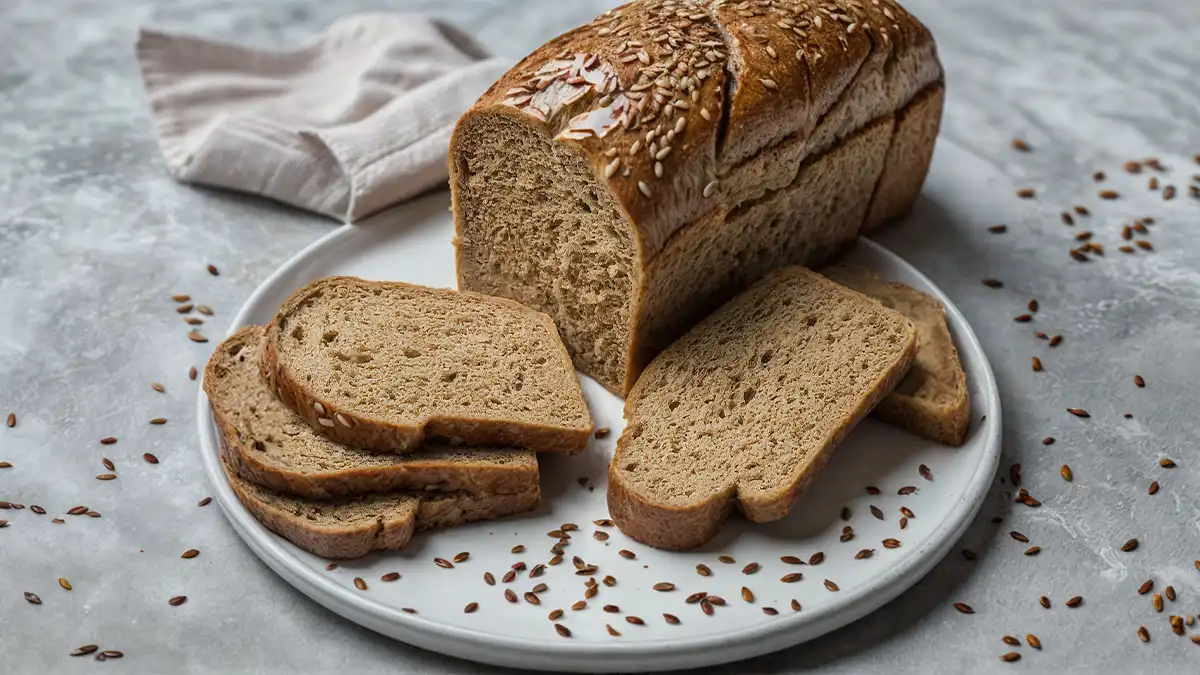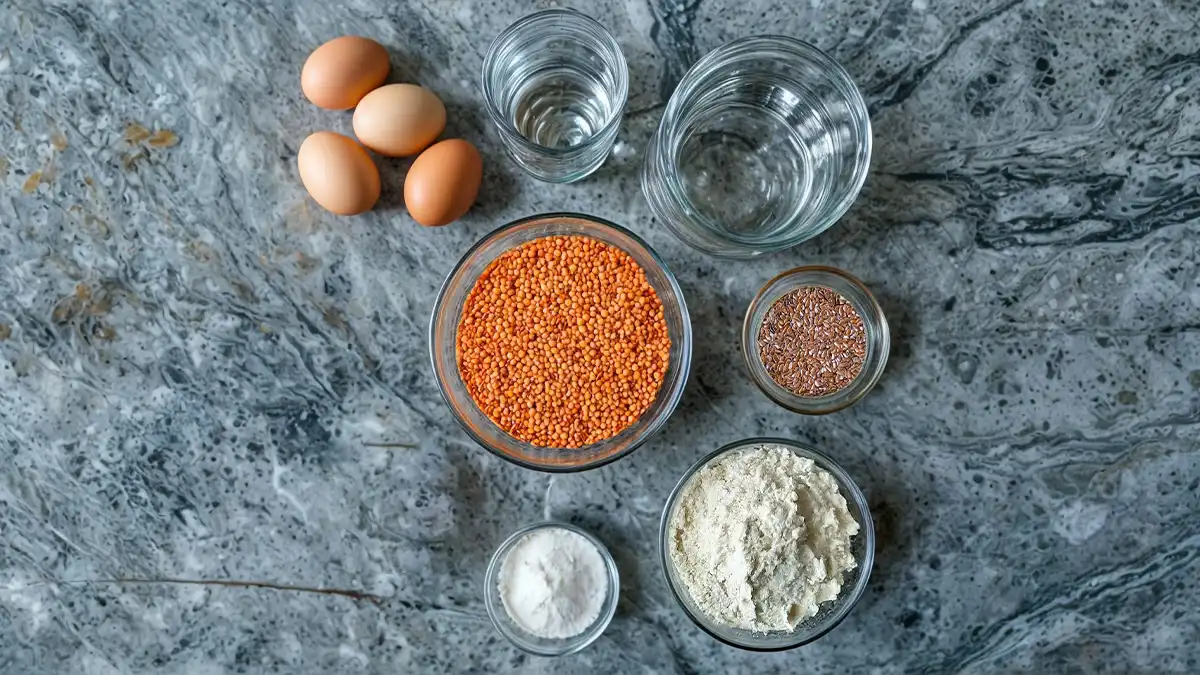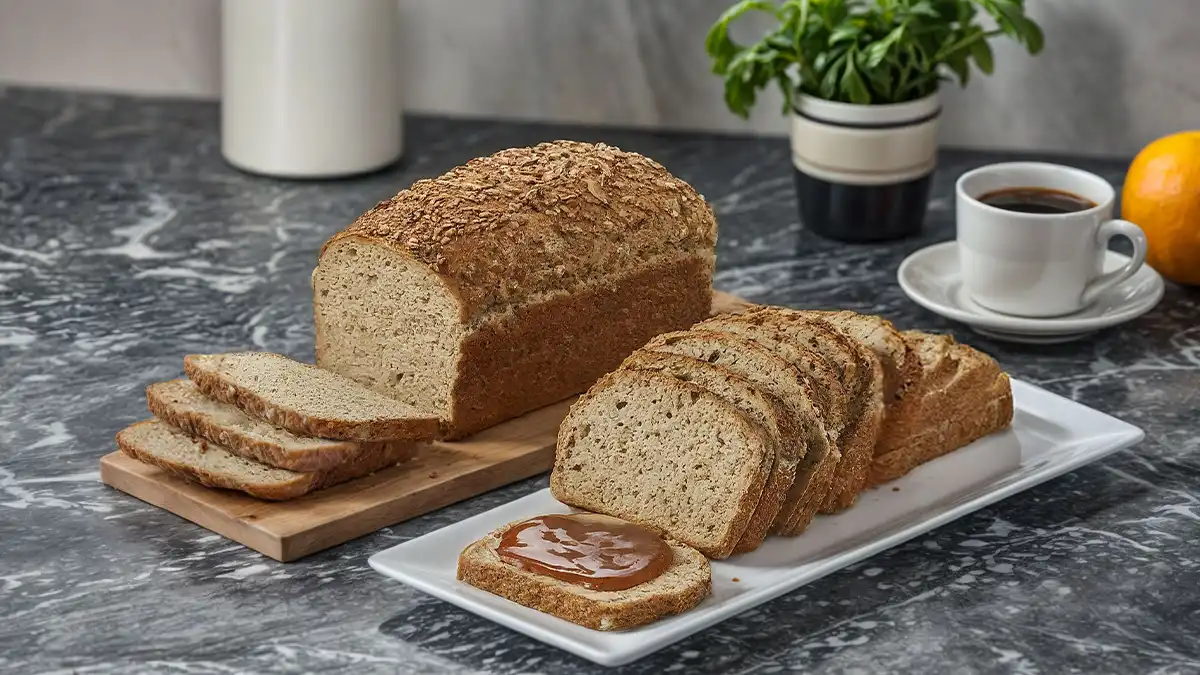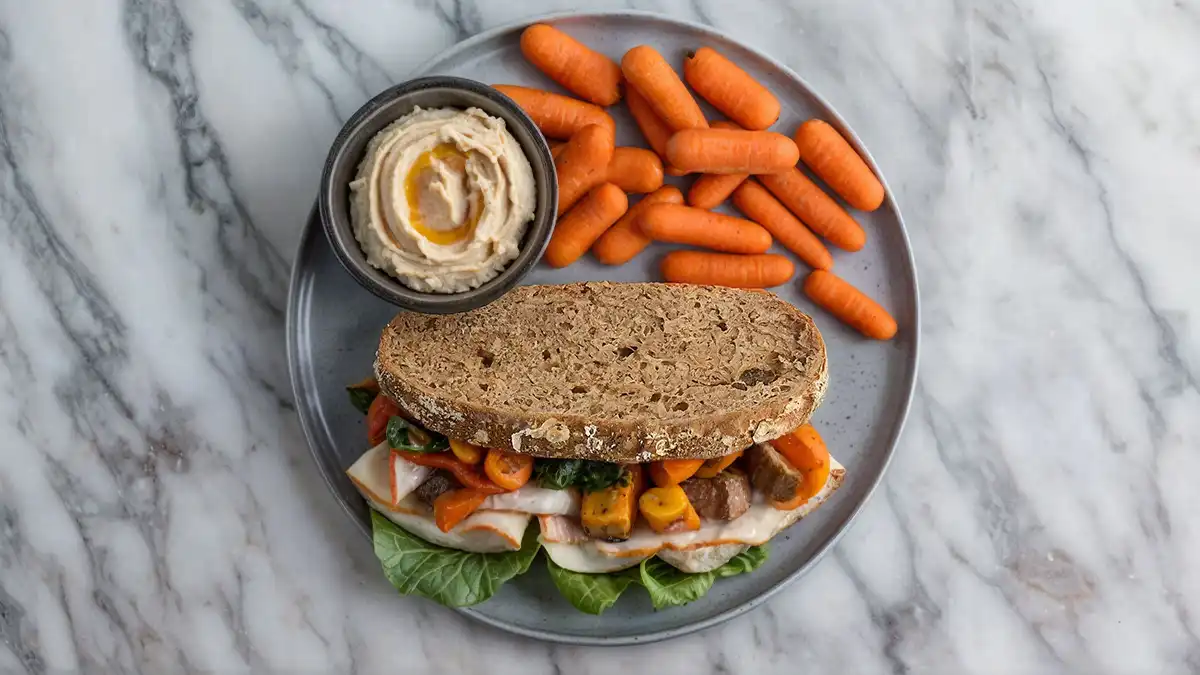Protein bread, a groundbreaking addition to the world of health-conscious baking, has been steadily gaining popularity. Unlike traditional breads that primarily offer carbohydrates, protein breads are designed to provide a higher protein content, aligning with the nutritional needs of those looking to boost their protein intake without sacrificing their love for bread.
Table of Contents
| Section | Content |
|---|---|
| Introduction | Overview of protein bread, its importance in the diet, and market trends for protein-enriched foods. |
| Making Protein Bread at Home | Essential ingredients, step-by-step baking guide, expert tips, and delicious variations to try. |
| Commercial Protein Bread Options | Review of top brands, nutritional benefits, consumer feedback, where to buy, and pairing suggestions. |
| Health Benefits | Detailed analysis of health benefits including muscle maintenance, weight management, and blood sugar regulation. |
| Protein Bread in Various Diets | How protein bread fits into different dietary plans: Keto, Gluten-Free, Vegan. |
| FAQs | Common questions about this recipe, including its benefits, homemade recipes, and storage advice. |
| Conclusion | Summary of key points discussed, future trends in protein bread market, and final thoughts. |
Why is Protein Important in Our Diet?
Protein is a fundamental component of every cell in our body, involved in various crucial functions such as repairing tissues, building muscles, and making enzymes and hormones. Including a sufficient amount of protein in our diet is essential for good health, and protein bread serves as a convenient and delicious way to help meet these dietary needs.
Trends in Protein-Enriched Foods
In response to growing health and wellness trends, the demand for protein-enriched foods has surged. Consumers are increasingly looking for ways to incorporate more protein into their diets, and protein bread offers a versatile solution that fits easily into various meal plans, from breakfast to dinner.
Table: Nutritional Comparison of Top Commercial Protein Breads
| Brand | Protein Content | Fiber Content | Caloric Value |
|---|---|---|---|
| Jim’s Amazing Bread | 12g per 2 slices | 10g per 2 slices | 250 calories |
| Silver Hills | 6g per slice | 4g per slice | 100 calories |
| Dave’s Killer Bread | 5g per slice | 5g per slice | 120 calories |
| Schneider Brot | 22.5g per 100g | 4g per 100g | 260 calories |
Transitioning into the next section, let’s delve into how you can make your own protein bread at home, exploring various recipes that not only cater to your health but also tantalize your taste buds.
Making Protein Bread at Home
Essential Ingredients for Homemade Protein Bread
Making your own bread at home can be a fulfilling and healthy endeavor. Typically, the essential ingredients for a basic recipe include:
- Protein sources: Commonly used protein sources include whey protein, pea protein, or plant-based protein blends.
- Binders: Eggs or flaxseed meal mixed with water can serve as great binders.
- Rising agents: Baking powder or yeast are crucial for helping the bread rise.
- Flour alternatives: Almond flour, coconut flour, or oat flour are popular gluten-free alternatives that add fiber and nutrients.
Step-by-Step Guide to Baking Basic Protein Bread
Mixing the Ingredients
- Start by combining your dry ingredients (protein powder, flour alternative, and rising agent) in a large mixing bowl.
- In a separate bowl, whisk together the wet ingredients (eggs or flaxseed gel, and water or milk).
- Gradually combine the wet ingredients with the dry, mixing gently to avoid overworking the dough.
Baking the Bread
- Preheat your oven to 350°F (175°C).
- Pour the batter into a prepared loaf pan lined with parchment paper.
- Bake for approximately 30-35 minutes, or until a toothpick inserted into the center comes out clean.
Expert Tips for Perfect Protein Bread
- Do Not Overmix: Overmixing can make the bread tough. Mix just until the ingredients are combined.
- Moisture Content: Depending on the protein powder used, you may need to adjust the amount of liquid to get the right dough consistency.
- Experiment with Flavors: Add seeds like flax or chia for extra nutrients, or incorporate spices and herbs for enhanced flavor.
Delicious Variations to Try
Protein bread can be versatile. Here are a few variations to spice up your recipe:
- Sweet Options: Add cinnamon, vanilla extract, or even a small amount of sweetener for a breakfast bread.
- Savory Delights: Mix in herbs like rosemary or thyme, and a bit of grated cheese for a savory twist.
For a flavorful pairing, consider serving your homemade protein bread with a hearty soup. Check out this Purple Sweet Potato Recipes from YumyDish, which offers a unique and nutritious option that complements the bread wonderfully.
Tutorial on Making Commercial-Style at Home
For those interested in baking their own bread that mirrors the commercial versions, here’s a helpful video tutorial that walks you through the process, providing tips and tricks to achieve that perfect loaf:
Transitioning from making to enjoying, the next section explores the top commercially available options, providing insights into each brand’s nutritional benefits and why they might be a convenient choice for your dietary needs.
Commercial Protein Bread Options
Overview of Available Brands
When it comes to convenience and variety, commercial protein breads offer a range of options. Here’s a look at some popular brands, their nutritional benefits, and what makes them stand out in the crowded marketplace of healthy breads.
Comparative Review of Top Nutrient-Enriched Bread Brands
Table: Nutritional Benefits of Popular Protein Bread Brands
| Brand | Protein per Slice | Fiber per Slice | Calories per Slice | Notable Ingredients |
|---|---|---|---|---|
| Jim’s Amazing Bread | 6g | 3g | 90 | Sprouted whole grains, no added sugar |
| Dave’s Killer Bread | 5g | 5g | 120 | Organic whole grains, seeds |
| Silver Hills | 6g | 4g | 100 | Sprouted grains, organic |
| Schneider Brot | 11.25g | 2g | 130 | Pea protein, wheat protein |
Consumer Feedback and Recommendations
Based on consumer reviews, Dave’s Killer Bread and Silver Hills are highly praised for their taste and texture, making them excellent choices for those new to protein breads. Schneider Brot, with its high protein content, is preferred by those with more focused dietary goals such as muscle building or macronutrient balancing.
Where to Buy
These breads are available in most health food stores and larger supermarkets. For convenience, they can also be ordered online through various retailers.
Pairing Suggestions
This type of bread can be enjoyed in numerous ways. For a delicious and balanced breakfast, consider pairing it with a high-protein spread or topping. You might want to try making Jamaican Beef Patty Recipe, which would complement the savory notes of a hearty slice.
In the next section, we delve into the numerous health benefits of integrating protein bread into your diet, underscoring why it’s a wise choice for maintaining a balanced and nutritious lifestyle.
Health Benefits of Protein Bread
Nutritional Advantages of Protein-Enriched Bread
Protein bread is not just another trend in the bakery aisle; it’s a nutritionally enhanced food item designed to support a healthy lifestyle. Rich in protein and often packed with fiber, it offers several health benefits that make it a worthwhile addition to your diet.
Muscle Maintenance and Growth
Protein is essential for muscle repair and growth. Consuming protein bread can be an effective way to increase your protein intake, which is particularly beneficial after exercise. This helps in faster muscle recovery and supports increased muscle mass, especially for those engaged in regular physical activities.
Weight Management
Due to its high protein content, protein bread can help you feel fuller for longer. This satiety effect can reduce cravings and decrease overall calorie intake, which is beneficial for weight management. The fiber in protein bread also aids in digestion and can contribute to a healthier metabolism.
Blood Sugar Regulation
High protein and fiber content in protein bread can help stabilize blood sugar levels. This makes it an excellent choice for people with diabetes or those trying to manage their blood sugar levels more effectively. Studies show that a diet rich in fiber can significantly lower the risk of developing type 2 diabetes.
For more detailed information on the impact of fiber on blood sugar control, consider reading about Bread Nutrition Facts and Health Benefits.
Improved Diet Quality
Incorporating protein bread into your diet can improve the overall nutritional quality of your meals. It’s a simple swap that increases your intake of essential nutrients without requiring significant dietary changes.
Creative Ways to Enjoy Nutrient-Enriched Bread
Protein bread is incredibly versatile. Whether you’re making a sandwich, toast, or even a dessert, it can enhance your meal’s nutritional value. For an innovative dessert recipe that pairs wonderfully with the slightly nutty flavor, try making the Bishop Cake.
Summary
This type of bread offers more than just a high protein count. Its rich fiber content and potential health benefits make it a smart choice for a balanced diet. As consumer awareness grows, it remains a popular option for those seeking nutritious, functional foods.
In the next section, we’ll explore common questions about this bread to help you better understand its uses, benefits, and preparation methods.
Protein Bread in Various Diets
Adapting Protein Bread to Different Dietary Needs
This type of bread can be a beneficial addition to various dietary plans, catering to specific nutritional needs while offering versatility in meal preparation. Here’s how it aligns with some popular dietary frameworks:
Keto-Friendly
For those following a ketogenic diet, which emphasizes low carb and high fat intake, this type of bread can be crafted to fit these criteria. By using ingredients like almond flour and flaxseeds instead of traditional grain flours, it can be made low in carbohydrates and high in healthy fats.
Gluten-Free Options
Gluten intolerance or celiac disease requires a strict gluten-free diet. Protein breads made from gluten-free flour sources such as chickpea, coconut, or buckwheat flour provide a safe and nutritious alternative to regular bread.
Vegan Varieties
For vegans, protein bread recipes can be adapted by using plant-based protein powders, such as pea or rice protein, and replacing eggs with vegan binders like chia or flax eggs. These adjustments ensure the bread remains high in protein without using animal products.
Table: Bread Variations for Dietary Plans
| Dietary Plan | Key Ingredients | Protein Source |
|---|---|---|
| Keto | Almond flour, coconut oil | Whey protein isolate, egg whites |
| Gluten-Free | Chickpea flour, buckwheat flour | Hemp seeds, pea protein |
| Vegan | Oat flour, flax eggs | Rice protein, mixed nuts |
Recommendations for Consumption
Including protein bread in your diet should align with your overall nutritional goals. It’s best enjoyed as part of a balanced meal, complemented by a variety of other nutrient-dense foods. For instance, pairing a slice of vegan protein bread with a Crab Brulee Recipe can offer a delightful balance of flavors and nutrients, suitable for a high-protein, gourmet meal.
Summary
These breads are adaptable to almost any diet, providing essential nutrients in a versatile and delicious form. Whether you’re keto, gluten-free, or vegan, there’s a recipe that can fit your lifestyle needs.
Next, we’ll explore some of the most frequently asked questions about these nutritious options to help clarify any further queries you might have about incorporating them into your diet.
FAQs
What Bread is High in Protein?
Protein bread is specifically formulated to have a higher protein content than traditional bread. Brands like Dave’s Killer Bread and Silver Hills are known for their protein-rich breads, often incorporating ingredients such as whole grains, seeds, and added protein powders. These breads can offer around 5 to 10 grams of protein per slice, making them a great choice for those looking to increase their protein intake.
What is the Healthiest Bread to Eat?
The healthiest breads are typically those that are whole grain and nutrient-dense, with low amounts of added sugars and unhealthy fats. Whole grain breads not only provide protein but also deliver dietary fiber, vitamins, and minerals. Options like sprouted grain breads, including those offered by brands like Ezekiel, are often recommended for their nutrient profile and health benefits.
Which Ezekiel Bread Has the Most Protein?
Ezekiel bread, particularly from the Food for Life brand, is well-known for its high protein content. Their sprouted whole grain bread typically contains about 4 to 6 grams of protein per slice, depending on the specific variety. Among their range, the Ezekiel 4:9 Sprouted Whole Grain Bread is notable for its high protein content, sourced from sprouted beans and grains.
What is a High Protein Bread Alternative?
For those looking for alternatives to traditional protein bread, other high-protein options include breads made from almond flour or coconut flour, which are also suitable for gluten-free diets. Additionally, making bread with ingredients like ground flaxseed, chia seeds, and pumpkin seeds can significantly increase the protein content. For those avoiding bread altogether, alternatives like protein-rich wraps or flatbreads made from lentil or chickpea flour can serve as excellent substitutes.
Conclusion
Summarizing the Benefits of Nutrient-Enriched Bread
This alternative represents a significant advancement in the realm of healthy eating. By enhancing the basic bread recipe with higher levels of protein and often incorporating other nutritious ingredients like seeds and whole grains, it offers a robust alternative to traditional bread. This makes it especially appealing to health-conscious individuals, athletes, and those looking to increase their dietary protein intake in a convenient and familiar form.
The Growing Popularity of Protein-Enriched Foods
The rise in popularity of protein-enriched foods reflects a broader trend towards diet-conscious eating. As more people recognize the importance of protein in maintaining health and enhancing physical performance, the demand for protein-rich alternatives to everyday foods continues to grow. This particular option is at the forefront of this trend, offering a tasty and versatile choice that fits easily into various meal plans.
Future Trends
Looking forward, the market for protein bread is expected to continue expanding. Innovations in food technology and nutrition might lead to even better-tasting and more nutritious products. As consumer preferences evolve, we can anticipate a wider variety of flavors and specialized products tailored to specific dietary needs, such as low-carb or allergen-free options.
Final Thoughts
For those yet to try this nutritious alternative, now is a perfect time to explore it. Whether you choose to bake your own using one of the many recipes available or opt for a ready-made option from your local supermarket, integrating this healthy option into your diet can be a simple step towards a healthier lifestyle.
In conclusion, this choice is much more than just a trend. It’s a functional food that supports a healthy diet and fits well into various dietary regimens, proving its value and versatility in modern nutrition.




